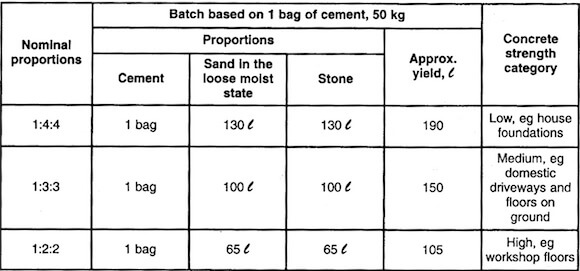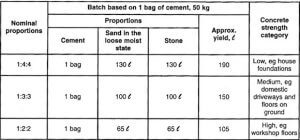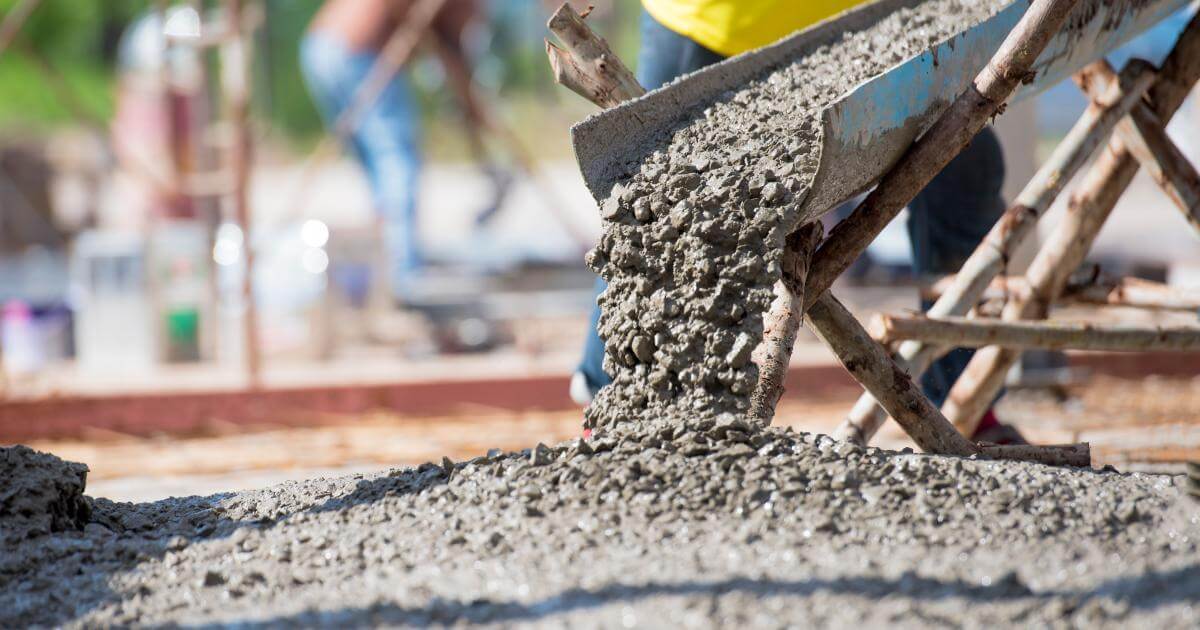
When producing concrete it’s necessary to use the correct concrete mixing ratios to make a strong, strong concrete mix. Some necessary mixing ratios for concrete are 1:2:3, 1:3:3, 1:2:4. These mixing ratios are based on the relationships of cement : sand : stones in that law. The ratio you do will depend on what psi power you require.
To make concrete there are 4 basic materials you require:
- Portland cement – You can purchase this in a 95lb bag
- Sand – Course or Fine aggregates (course sand will provide you a more powerful mix)
- Aggregates (stone) You can practice 3/8″, 1/2″, or 1/5″ stone for aggregates
- Water

How to mix cement to make a mortar or concrete mix
With the exact tools, materials, protection equipment and a bit of curve grease, you can make your mortar or concrete mix – able to use for your project.
But if you’re up for any DIY, mixing cement is simple and you can do it in a few fast steps:
- Arrange tools and materials
- Mix sand, cement and water to obtain a mortar and to make concrete, add aggregates to the mix.
- Mix completely till it reaches the right density
- Mix materials to produce mortar or cement
- Get washing to prevent setting
Concrete Mix Proportions
Four-two-one and the Seven Part Mix Ratio
Conveniently, when processing concrete, the ratio can be combined on any scale. That can suggest four spade fulls of rock with two of sand and cement; four 4-gallons containers full of rocks, two containers of sand and one containers of cement; or four front-end loader buckets full of rock, two sand and one cement.

Water Proportions
The most important x-factor in concrete, water is an variable. The quantity of water needed depends on the air temperature outdoor, the humidity, the number of direct sunlight, and the concrete mix ratio. The most significant thing to identify about water is that the extra there is in concrete mix balances, the thinner cement’s kept tensile strength, sticky strength. Ideally, the smallest amount of water potential is the best if strong adhesion is a high precedence.
But, again, sometimes there are circumstances where where workability is a more important priority than structural honesty and water is the secret to workability.
Read here How Much Concrete Do I need For 10X10 Slab?
Concrete Mix Proportions Notes:
1) The infinite rock, the higher the compressive durability of concrete. The more sand, the greater the workability.
2) (cement) and compressive strength are two various factors in the variety of concrete. More cement does not propose more compressive strength; it expects more tensile strength.
3) The more limited water, the greater cement, but the more challenging it is to work with the concrete.
The power of the water was the hard part. If the concrete was too hard, it was hard to place, if too wet then strength would be weak. Because most sands have any moisture, the operator had to resolve how much water was in the sand. If sand was supposed too wet, he would be directed to decrease the amount of water. This was good tip however the final volume of water added to the concrete mixture was based on experience.







